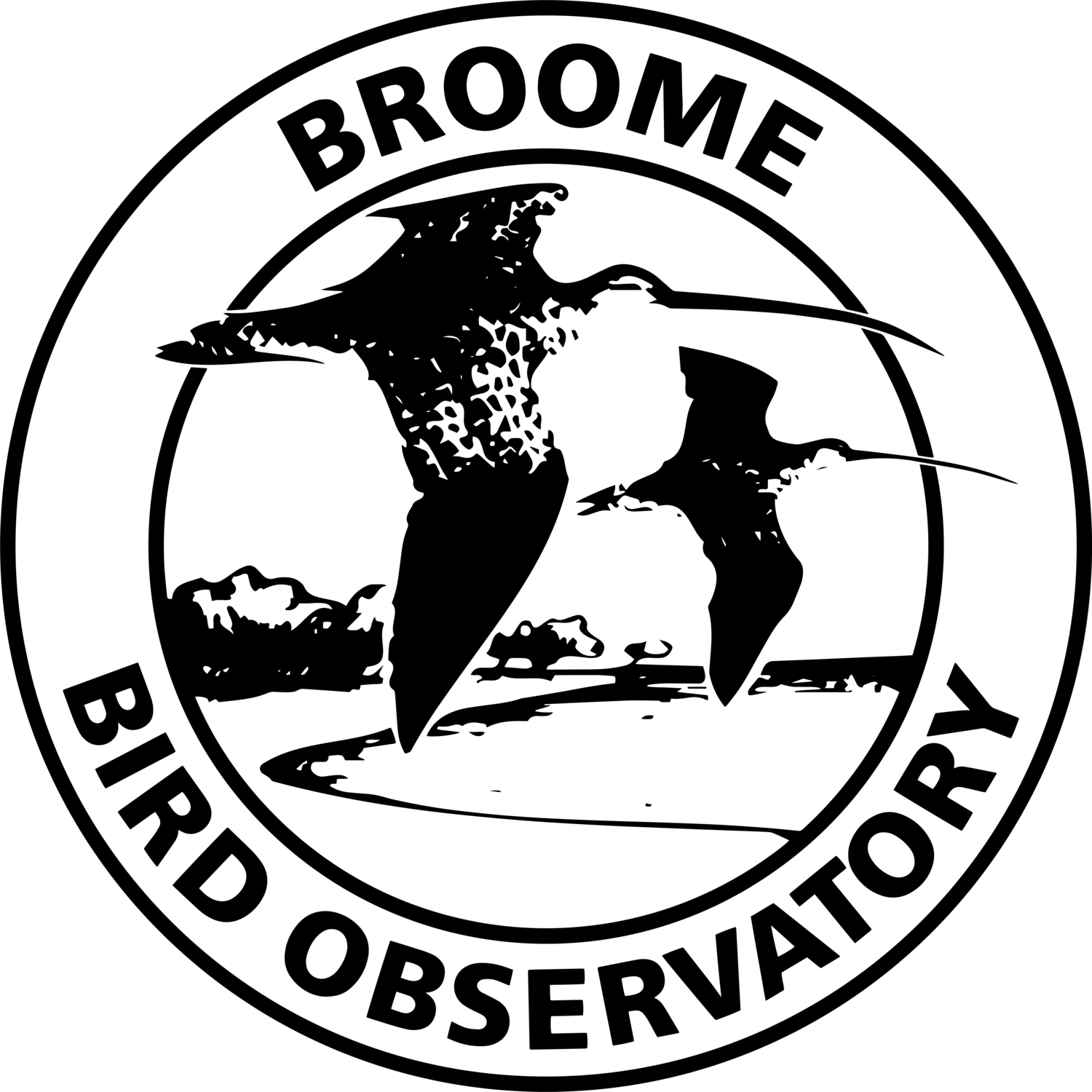Watching a Satellite Tracked Godwit depart Roebuck Bay
This blog was written by Global Flyway Network’s Chris Hassell. Chris is also a member of the BBO committee - and a former warden! This piece originally featured on the Global Flyway Network blog, and was too good not to share. Enjoy:
The Whole idea with satellite telemetry is to be able to track birds when they are in places where observers aren’t, be that on an inaccessible mudflat within 4 kilometres of where the bird was banded or thousands of kilometres away flying across an ocean on migration.
However, on the ground observations of tagged birds add weight to the telemetry results and can also tell us about the state of a bird’s plumage, body condition, and whether the tag is still well secured and in a good position. If for some reason the tag stops working there is some speculation needed to try and decide if the tag failed technologically, fell off the bird or the bird died. Direct observations of individually tagged birds (with or without the tag) are extremely useful to get a complete picture.
And maybe, just maybe one day you might actually see a tagged bird migrate. Admittedly the chances are very slim but, if it’s going to happen anywhere then a likely spot is in Roebuck Bay right in front of the Broome Bird Observatory (BBO) https://www.broomebirdobservatory.com/
Every year since the establishment of BBO in 1988 the staff and volunteers have undertaken ‘migration watch’. Taking up position on the beach or in recent years, on a low cliff due to mangrove encroachment each and every night between about March 4 (when Eastern Curlew start to leave) and about May 14 (when Red Knot stop leaving), they record each all the flocks they are able to see.
The ‘Vismig’ spot in Roebuck Bay
Sometimes the flock can literally fly right over the observer’s heads tracking north or north west, off on their 4 to 6 day flight to eastern Asia, the first leg of their migration.
It’s a fantastic experience watching this unfold in front of your own eyes. BBO get 100’s of visitors witnessing it each year and it’s a better educational experience than any presentation or classroom visit! Anyone is welcome to join the BBO staff between 4 and 6PM any evening until early May. Stools and telescopes are available to use.
Back to actually seeing a tagged bird leave.
I am sure you have worked out what’s coming. I did a talk to BBO course guests on Sunday April 11th and then joined the BBO staff, volunteers and guests at migration watch, ‘viz mig’ to the nerds!
Between 16:00 and 18:00 we saw 1,164 birds migrate and of those 744 were Bar-tailed Godwits. At about 17:25 we were watching a flock of 90 Bar-tailed Godwits through telescopes and binoculars. The flock spent about 5 minutes ‘faffing around’ circling, getting in to a vee formation, breaking apart, reforming all the while calling excitedly. At 17:35 they disappeared from our view heading WNW in a neat vee. A typical migration sighting but it’s never less than emotional to see them leave and comprehend they are off on a 4 to 5 day, 4-6,000 km flight.
Now what I want to tell you here is that I also saw the antennae of a satellite transmitter sticking up from the back of one of these Bar-tailed Godwits. However, that would be a straight up lie! So I won’t do that. But 2 days later I got an email for my GFN colleague Lee Tibbitts at United States Geological Survey ‘Looks like she departed RB at 1730 local time on 11 April. Now flying over Sulawesi. ’.
Yes, even renowned scientists can’t resist the odd smiley face.
And that email got me to ask BBO for that day’s data and hey presto we all watched her leave!
And not only did we watch her leave but, Anthony Albrecht of the Bowerbird Collective filmed her and the flock!
Click here for the video on YouTube; https://www.youtube.com/watch?v=bYO74J0wPhY
‘She’ is rather uninspiringly know to me as 5YRRB and to Lee and Ginny Chan (a PhD student with GFN) as PTT 151860. She had her tag attached 17-10-2015 and she has completed 5 north and south migrations carrying her tag. And this is her 6th northward trip. Good luck wonderful bird!
She has been seen only 35 times since tagging. I say ‘only’ as we usually see Bar-tailed Godwits tagged in Roebuck Bay a lot more often than that as they are very site faithful but, she forages in a very small area of mudflat about 4 km south of Little Crab Creek sand spit, which is the closest we can get to her usually. She doesn’t roost on the northern shores much being more often tracked on the salt marsh to the east of the bay or Bush Point in the south. She has not been seen outside of Roebuck Bay but, maybe this year. The last time I saw her was 28-03-2021 and I scored her abdominal profile as 5 i.e. fat with plenty of energy stored for a long flight.
As I complete this note she is a minimum of 5,650 km away from Roebuck Bay on her usual spring staging site at Tiaozini, Dongtai, Yancheng, Jiangsu 200 km north of downtown Shanghai. It appears from her satellite track that she did that distance in a single flight, presumably with her 90 flock mates.
5YRRB’s current location (pink circles)
5YRRB on a Roebuck Bay beach 13-12-2020
A big thank you to Anthony and Simone of The Bowerbird Collective for the footage with added music.
To see more of their inspirational art go here; https://www.youtube.com/watch?v=VDotxnJ7bBI
Chris Hassell 25/04/2021



